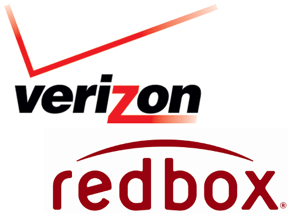Redbox’s long-awaited streaming video service is almost here, thanks to a partnership with Verizon that was announced in July. I lucked out and got an invite to the service, which was launched in beta last month, and have played around with it a bit. Here’s what you need to know about Redbox Instant and how it stacks up against the competition.
Pricing
The first thing most users will evaluate the service on is its pricing, and how it compares to offerings from Netflix and Amazon Prime Instant Video. Redbox Instant has three pricing tiers, at $6, $8, and $9 a month. For $6, you get access to streaming only, from a fairly limited library of content — more on that later.
The $8 plan gives you unlimited streaming plus four kiosk rentals a month. That works out to a pretty good value for frequent Redbox renters, as each kiosk credit is good for a rental that usually costs $1.20 per day. For those who want to be able to rent Blu-ray discs, there’s a $9 per-month plan that is a somewhat better value, as you get four credits for Blu-ray rentals, which usually cost $1.50 per day.
In addition to the monthly subscription plan, there’s also an option to purchase or rent video-on-demand titles, with prices similar to those offered by Amazon, Vudu, Google Play, and iTunes. New release purchases typically cost $16.99 or $21.99, depending on whether they’re available in SD or HD. (Not all purchases are available in HD, and it’s not clear why or why not.) New release rentals typically cost $4.99 in SD or $5.99 in HD.
Content Availability
The first thing you should know is that the number of options under the streaming subscription is pretty limited, especially when compared to companies like Netflix or Amazon, which have been doing this for much longer. But that’s probably to be expected: After all, when Amazon announced the availability of video as part of its Prime subscription, the company came to market with just 3,000 titles. Over the past two years, it’s dramatically increased the number of options available, and I have no doubt that Redbox Instant will do just the same.
The other noticeable thing about the service’s content library is that there’s not much there that I can’t find through Netflix or Amazon. Key new-ish releases — such as Thor, for instance, or The Lincoln Lawyer — are available on both Netflix and Amazon. The reason for this is that their studios have output deals with Epix, and Epix has deals with both the big streaming providers. Not surprisingly, Epix is also a partner for Redox Instant.
Outside of that, though, there’s not a whole lot of content there today to compel a Netflix user to switch. That is, unless said user is also a big DVD kiosk user. If that’s the case, Redbox has hundreds of newer DVDs and Blu-rays that it can offer at convenient locations nearby.
Device Support
As of now, it appears that Redbox Instant only supports mobile devices and tablets, like the iPad, iPhone, and various Android devices. I’ve tested it out on my laptop, on my iPad, and on my iPhone, and it worked well on all of them. There’s even the ability to start watching on one device and pick up on another.
On PCs, Redbox Instant relies on Silverlight — the same plugin that Netflix uses — presumably due to DRM concerns. On the iOS devices I tested the service out on, playback was done through a video player within the app. Playback works on both Wi-Fi and wireless (even 3G!) networks.
While the company says it will support devices such as Samsung Blu-ray Players and TVs, LG Smart TV and Blu-ray Players, and Google TV, the Redbox Instant website currently only shows availability on the mobile devices and tablets above. Likely its device footprint will expand as time goes on.
Not Really A Netflix Killer
At this point, it’s becoming increasingly difficult to roll out a streaming subscription service that will truly compete with Netflix. Amazon has tried, and so has Blockbuster. Each has different advantages: For Amazon, there’s a slightly lower price due to its $79 annual fee and bundling with Amazon Prime subscription. For Blockbuster, the service is packaged with its existing pay TV service, meaning no need to pay more than one video provider.
For Redbox, the Instant service is a way to get more money out of existing heavy users and to convert them from analog to digital streamers. Note that this was a novel idea back in 2008 or so, when Netflix first started doing it. But we’ve come a long way since then. The question is whether Redbox Instant can convert video streaming customers to DVD kiosk users; on this front, I think they’ll have a difficult go of it.
For the most part, if users are already streaming video, they’re probably unlikely to switch to Redbox. But if they aren’t, the value of streaming-plus-DVD probably isn’t that bad of a deal. It’s already a crowded space, and while Redbox Instant will continue to improve, the early lead Netflix has, combined with the existence of at least two other serious competitors, means that the Verizon/Redbox joint venture is probably too little, too late.
[gallery ids="730842,730840,730841,730843,730845,730844"]
